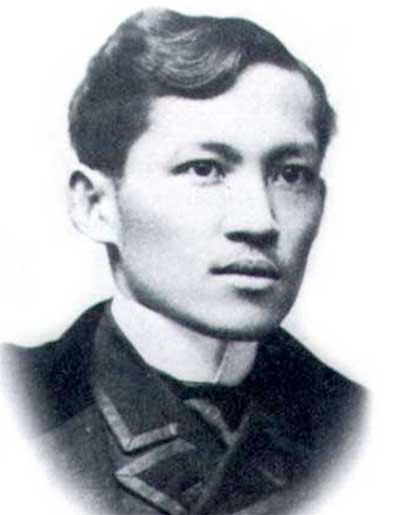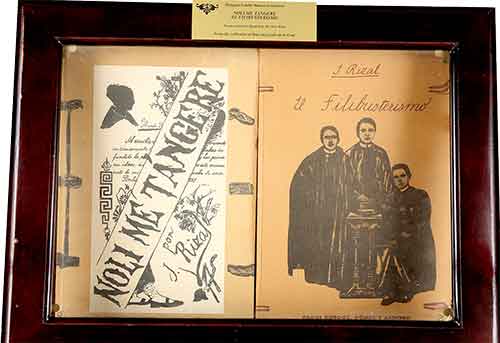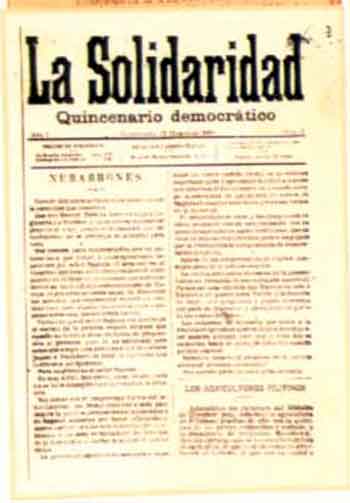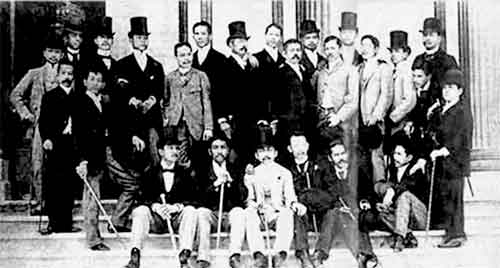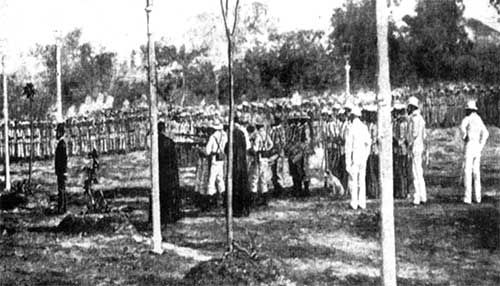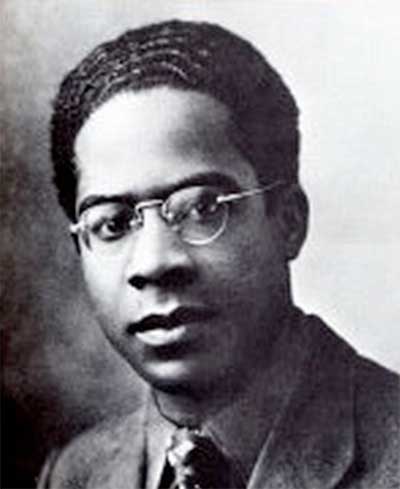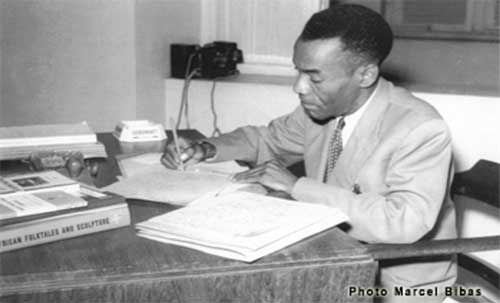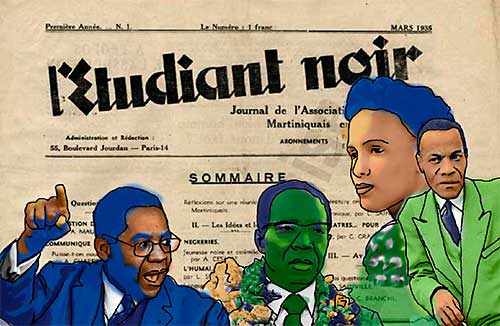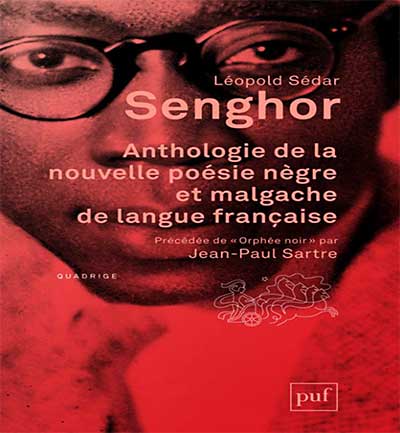FORUM:
The Philippines and World History
Embracing the Pejorative, Challenging Authority: Resistance in Philippine and African and African Diaspora Contexts
Paul A. Rodell
This paper will explore a phenomenon of resistance often overlooked in studies of colonialism and imperialism, namely how can a people held in low regard by a dominant group and kept in their place by pejorative personal references resist? Ultimate relief may come from a variety of liberation struggles, but at an early stage of confrontation the tactics of resistance that challenge authority must be subtle and focused on building pride and confidence. One of the more pernicious aspects of colonial domination is the destruction of the colonized culture of which there are a plethora of examples. How, then, is knowledge of and pride in one's culture and traditions and even one's own individual worth as a human being restored? This must be achieved before more direct forms of political resistance can even be contemplated.
This paper will look at two attempts to restore individual and societal pride in the face of pejorative dismissal by the dominating others. Specifically, we will explore the coining of the term "Los Indios Bravos" by the late nineteenth century Philippine-Chinese mestizo students in Spain and the development of Négritude by West Africa and the Caribbean students in Paris who also were influenced by the Harlem Renaissance in the United States. While each took place at different times and places and had their own characteristics, they both embraced a pejorative term that had been used against them and in so doing deprived their presumptive superiors of a weapon of dominance and as they themselves found powerful tools of resistance. They were also both conceived and led by the young intellectual elite of their countries many of who excelled in literature and the arts and were equal to any European.
Inspiration for this paper first came when I was a participant in a 2010 faculty development program that took me and others from my university to Senegal, West Africa. We were hosted by the West African Research Center in Dakar, Senegal's capital, and funded by a Title VI grant from the Department of Education. On a group trip to a nature preserve, we were joined by the Center's Director Dr. Ousmane Sene who spoke to us after the day's lunch about Léopold Sédar Senghor who was Senegal's first president and one of the principle founders of the Négritude movement in the 1930's. As part of his talk, Sene deconstructed Senghor's moving poem "Joal" which spoke of a Senegalese man living in Europe and homesick for his African roots. We were all fascinated by Sene's lecture analyzing Senghor and his writing, but I had a connection to what I heard that the others in the group did not. I knew the term Los Indios Bravos from my earlier experiences in the Philippines and immediately saw a connection between that brief Southeast Asian movement and the more wide-spread and longer lasting Négritude. How the connection was similarly important in two different times, places and social-economic contexts of the European colonized world caught my attention and is the focus of this paper.
Los Indios Bravos – the Philippines
In the late 1960s and early 1970s, I was a Peace Corps volunteer in the Philippines working as an agriculture extension agent with a hill tribe people living at the base of Mount Pinatubo on the western side of the country's main island of Luzon. Being so isolated, there were only rare trips to Manila, and on these infrequent occasions I enjoyed spending evenings at a café-coffee shop called Los Indios Bravos in the Malate district in the older part of the city. The shop's relaxed atmosphere appealed to me and they served wonderful hot cups of Spanish chocolate and offered a good food menu. But more important for this newcomer American was the café's atmosphere of gentility not found in that district's hostess bars and night clubs. The music they played was by Bob Dylan, the Doors and other counter-culture and folk singer icons who were then in their heydays. I soon met various other café clientele and became acquainted with some of Manila's artists, dancers, musicians and writers.1 I later learned that the name of the place had historical roots in the country's resistance to Spanish colonial rule and its prominent nationalist hero Jose Rizal. It was Rizal who coined the term Los Indios Bravos for himself and his friends who were students in Europe in the 1890s. I was impressed, but at the time I didn't understand the full implications of the term and the story behind the name.
In fact, the term Indio was used by Spaniards in the colonial Philippines, and perhaps also in Latin America, to deprecate the human value of indigenous Filipinos, and this pejorative was extended to include even wealthy Filipino-Chinese mestizos. An Indio was characteristically an uneducated native peasant usually a tenant or a poor farmer scratching out a miserable existence on substandard land. The idea of an Indio was, therefore, that of a wretched individual who was probably mired in native superstition and incapable of anything except lowly work in service to his presumptively superior Iberian masters. By the nineteenth century, however, the indigenous population had become more complex as an increasing number of Filipino-Chinese mestizos came into their own as a prominent group whose wealth was based on successful mercantile activities and the ownership of large haciendas producing sugar, coffee, hemp and other crops for a growing international trade as well as rice and even cattle for national consumption.
This Filipino-Chinese mestizo rise coincided with a dramatic decline of Spanish fortunes earlier in the nineteenth century as most of Spain's empire in the Americas was lost to Mexican independence and Simon Bolivar's continent-wide revolutionary movement. One of the many consequences of this imperial disaster was the end of the profitable Galleon trade that brought shiploads of silver from the new world, principally Mexico, to Asia from 1751 until 1821. China had been an inexhaustible market for the world's silver since 1430 when the Ming dynasty converted the payment of taxes exclusively to small silver bars called taels. Over most of the course of Spain's long colonial period, heavily laden galleons from Acapulco arrived in Manila where Chinese merchants exchanged their country's luxury goods for the precious metal. The end of that trade in 1821 also ended the easy lifestyle of Manila's Spaniards who never had to engage in a great deal of productive labor since they merely acted as the local agents in this silver for luxury goods international exchange. Instead, it was the hard-working Filipino-Chinese mestizos of developed their fortunes in retail enterprises who shifted their attention from Manila to the provinces and over time rose to ever greater prosperity as the colony shifted its focus to locally produced agricultural exports.
The economic rise of the mestizos was soon translated into other areas of colonial life. Mestizos built large houses, wore fine cloths, held local municipal government positions and sent their sons to Manila's better schools. (At the time, however, this was only for men as all women in the Philippines were not encouraged to higher learning or to participate in activities outside the home.) The only problem for the native-Chinese mestizos came in the political realm as Spaniards came to suspect that mestizos were beginning to set their sights on playing a significant role in the country's religious-political life, both sectors of which had always been under absolute Spanish control. These suspicions and resentment of mestizo advances grew after 1821 as former Spanish colonizers left the Americas for the Philippines and brought with them their fear and resentment of South American revolutionaries. So this influx of Spaniards increased antagonisms as the decades passed.
Then, in 1872 a mutiny of Filipinos soldiers at the Spanish naval yard in Cavite in Manila Bay over issues of pay and working conditions was used as a pretext to implicate three prominent and outspoken Filipino priests in an imagined conspiracy with native soldiers. The three priests were found guilty and garroted which sent a shock wave through the mestizo community. If mestizo priests were not safe, all other mestizos certainly must not challenge Iberian authority in any way. Later, in 1888 a political petition in Tondo, a prominent section of Manila where many of these mestizos lived, was also used to arrest the sector's leading mestizos, some of whom were sent into exile. This context of rising social-economic status and political subjugation provided the impetus for the life experience of a new generation of young mestizos.
To broaden their educational possibilities beyond the narrow scope allowed them in Manila's religious schools, young mestizos began to enroll in institutions in Spain. So, when the young Jose Rizal arrived in Europe his nascent nationalist consciousness that had first been sparked during his Manila school days rapidly increased. For example, in 1887 while traveling in Europe he heard that a group of mountain tribes people called Igorots had been put on display in a city Zoological Garden. He was infuriated and in a letter to his German friend Fernando Blumentritt, he wrote, "I have worked hard against this degradation of my fellow Filipinos that they should not be exhibited among the animals and plants! But I was helpless. . . . Let the Philippines not forget that her sons have been treated like this – to be exhibited and ridiculed." 2 Rizal and his fellow students knew they were not "naked savages brandishing tomahawks or Chinese peddling sweetmeat pies" 3 and they resented the prejudice they encountered.
However, the immediate catalyst for the name came when Rizal and his companions visited the 1889 Paris Exposition. There, they took in a Buffalo Bill Wild West show that featured American Indians. Rizal and his companions noted that these indigenous peoples were the equivalent of the Filipino Indios, but were dignified and proud unlike his own native men and women who had been beaten down by the colonial Spaniards who called them ignorant and indolent. It was as a result of this revelation that Rizal came up with the name Los Indios Bravos. His idea was that such a name would take the pejorative so commonly applied to Filipinos by their Spanish overlords and by embracing it they would subvert its racist designation. 4 He undoubtedly saw the connection between the American Indians and Filipino "Indios" and chose a little used, but accurate use of the Spanish "bravo," as a synonym for brave. 5 The members of the group swore to be the best in all they could physically, artistically and intellectually to show the Spaniards that Filipinos were their equals or more.
|
|||
| Figure 1: The Young Jose Rizal in Europe https://commons.wikimedia.org/w/index.php?curid=276015 |
|||
It is especially noteworthy that Rizal and his fellow student friends were as far from the common peasant Indios of the Philippines as one could possible conceive. All came from well-to-do Filipino-Chinese mestizo families. No immediate members of their families plowed their own fields or shelved goods in shops. Furthermore, all had exhausted their country's educational opportunities where they excelled and they came to Europe, often on their own money, for advanced education. In fact, many of the group were high achievers even in Europe. Rizal produced two famous novels that the Spanish regime in Manila classified as "seditious," Noli Me Tangere (Touch Me Not) and El Filibusterismo (The Subversive). Today, each of these have been translated numerous times and are central to the county's literary and nationalist tradition. In addition, Rizal labored to annotate Spanish works on the Philippines to counter author biases, wrote numerous essays and had an active correspondence with European intellectuals. He did all of this while earning a medical degree as an optometrist. Another member of the group was Juan Luna who became a well-known artist and won Spanish national honors for one of his works. 6 Others, meanwhile, excelled in their studies in addition to their extra-curricular activities as essayists. They even began a fortnightly newspaper, La Solidaridad that had to be smuggled into the Philippines because the colonial government banned it as subversive.
|
|||
| Figure 2: Copies of covers of early editions of the "Noli" and the "Fili" the latter with an idealized sketch of the three martyred priest of 1872, Fathers Burgos, Gomez and Zamora http://philippinefolklifemuseum.org/exhibit-rizal-books-noli-fili/ | |||
So, what was so uniquely revolutionary about the term Los Indios Bravos? Normally, this group of extremely privileged, wealthy and talented young men would be expected to build their personal achievements and make their families richer and stronger. Commonly, men of this class since they did not associate themselves with common Indios so they assimilated dominant Hispanic cultural prejudices and look down on their poor and uneducated fellow Filipinos as did the colonial rulers. But, by the late 1880s change was beginning to create a new generation that did not want to follow familiar paths. They saw that in Spanish eyes they were no different from the Philippine common tao (man) or Indio – no matter their mestizo status, wealth or education.
|
|||
| Figure 3: https://en.wikipedia.org/wiki/La_solidaridad#/media/File:La-solidaridad2.jpg | |||
While this break from the dominant Hispanic cultural norms was important, the term Los Indios Bravos had an additional meaning and importance that was critical. Before coming to Europe, these young men might have seen themselves as a separate and superior group different from the broad mass of their countrymen even if they were sympathetic to those of lesser status and wealth. However, in Europe's more open and accepting culture they realized that they were, in fact, just as much Filipino as any peasant. So, by calling themselves Los Indios Bravos they were declaring that they too were Indios just like the poorest and most unlettered of their fellow countrymen. This a key point in the development of a very deep national, racial and political consciousness upon which a nationalistic anti-colonial movement can grow. 7 This political consciousness then became infused in Rizal's novels and other writings and in the pages, and even the name, of the group's journal La Solidaridad.
|
|||
| Figure 4: Young Filipino "Ilustrados" in Madrid, ca. 1890 https://en.wikipedia.org/wiki/Marcelo_H._del_Pilar#/media/File:Ilustrados_1890.jpg |
|||
As a specific movement, Los Indios Bravos had only a brief life. In about a year, the members, even including Rizal, lost interest and shifted their attention toward their Masonic allegiances. In 1892, Rizal returned to the Philippines where he founded La Liga Filipina (The League of Filipinos) which shared characteristics with both Masonry and Los Indios Bravos.8 Nevertheless, the brief spark of embracing the term of Indio was critical for the process of creating a consciousness that could challenge the dominant colonial order. In 1896, Andres Bonifacio, a less well-off non-mestizo Liga member, led an armed rebellion. Bonifacio specifically created a new revolutionary society known as the Katipunan to fomenting an armed national uprising that would overthrow Spanish rule. When the revolt erupted, Rizal who was not involved in the uprising, but embodied national consciousness and resistance, was arrested, given a perfunctory trial and shot by a firing squad which further accelerated Filipino revolutionary spirits and helped to insure Spain's ultimate defeat in 1898.
|
|||
| Figure 5: Photo of Rizal's Execution 30 December 1896 at Bagumbayan (today's Rizal Park) Manila https://commons.wikimedia.org/w/index.php?curid=275813 |
|||
Négritude in Africa and the African Diaspora
Almost fifty years later another movement arose among talented colonial youths also studying in Europe. These young men were from Africa and the Caribbean and their movement embraced the word "Negro" which had all the pejorative baggage, and even more, than Indio. The Négritude movement is commonly credited as being founded by Léopold Senghor of Senegal, Aimé Césaire from the Caribbean island of Martinique and Léon-Gontran Damas from French Guiana also in the Caribbean. All three were students in Paris and came to Europe for many of the same reasons as did the young Filipinos of Jose Rizal's day, although they undoubted had never heard of the brief Los Indios Bravos group of young Filipinos. One big difference between the nineteenth century Filipino movement and Négritude was the international scope of the 1930s movement. Rather than a movement by people from a single country, Négritude began as an international movement that included both Africa and the African diaspora and this broad reach assured the movement's comparatively greater relevance and impact and probably contributed to how long it existed as a vital force.
The French colonial rule they had to contend with was also much different from the Spanish overlords their Filipino predecessors lived under. While the First World War had greatly weakened and traumatized Europe, France's global empire still appeared strong unlike the greatly weakened Spain that had few remaining colonial holdings in the late nineteenth century. However, just as the young Filipinos could not predict the Spanish-American of 1898 that would so impact their country, when the three Négritude fathers (les trois péres) were young students they could not anticipate the cataclysmic events of the Second World War and its aftermath that would lead to the founding of new independent nations.
Also unlike the young Filipinos, the Négritude fathers were able to build their movement by expanding on the ideas and activities of a number of predecessors. Influences could be traced back as far as the Haitian slave revolt led by Toussaint L'Overture in the 1790s which temporarily overthrew French colonialism in that sugar rich colony and was especially inspiring to Aimé Césaire who wrote a biography of him in 1960 late in his own life. A century later in 1885, Haitian anthropologist Antenor Firmin wrote De l'égalité des Races Humanines (On the Equality of the Human Races) to refute the French writer Count Arthur de Gobineau's Essai sur l'inegalite des Races Humaines (Essay on the Inequality of Human Races).9 These pioneering resistance movements provided inspiration and a spirit that the Négritude movement built upon.
Another frequently cited influence on Négritude that began only a few short years earlier was New York's Harlem Renaissance of the 1920s and 30s. Especially influential were its key figures Langston Hughes, Claude McKay and Richard Wright who addressed themes of blackness and pride in cultural uniqueness.10 The Harlem Renaissance's emphasis on literature and culture was especially appealing to the three Négritude fathers whose ideas were influenced by the French colonial emphasis on culture as a definition of nation. This influence was especially apparent in the case of Aimé Césaire who studied the works of Harlem Renaissance leaders and even wrote a dissertation about the movement.11 For its part, French colonialism's offer of "assimilation" to African colonials usually known as their Mission Civilisatrice sought to raise up the peoples under their rule whose cultures were, by obvious implication, uncivilized. However, Négritude leaders noted that they had been attempting to assimilate for decades to no avail. So perhaps, they argued, it was time to follow the example of their African diaspora brothers and sisters in New York and look instead to their own indigenous history and civilization and focus on common African cultural roots. It is also noteworthy that the ideas of American blacks such as Marcus Garvey who emphasized race and separation held little attraction for these Francophone intellectuals who were more interested in equality and partnership than separatism.
|
|||
| Figure 6: A Young Aimé Césaire frindethie.wordpress.com |
|||
Meanwhile in Paris, three sisters from Martinique, Paulette, Andrée and Jane Nardal owned the Clamart Salon restaurant and tea-shop that became a gathering place for the city's intelligentsia and included black as well as white French patrons. The sisters plus Dr. Leo Sajou, who was originally from Haiti, founded a short lived literary journal La Revue de Monde Noir (Journal of the Black World) that was published in English as well as French and this served as their public face for two years in the early 1930s until it ceased publication.
|
|||
| Figure 7: Paulette Nardel and the role
that she and her two sisters played in the Négritude movement http://slideplayer.com/slide/6626744/23/20/Literary+Salon+&Magazine.jpg |
|||
It was in this milieu and upon this foundation that the three Négritude fathers began their collaboration in 1931. Césaire and Damas already knew each other from high school in Martinique. When Damas followed new interests in anthropology and engaging in radical politics, his parents cut off his financial support. He then held a number of odd jobs and eventually obtained a scholarship which allowed him to continue his studies and gave him independence.12 At about the same time, Césaire was accepted at the Lycée Louis Le Grand and it was there that he met Senghor on his first day of classes. Senghor, meanwhile, had already been in Paris for three years having earlier won a state scholarship from his native Senegal. Sanghor was born in 1906 to a strong Christian family in a predominantly Muslim country.13 He first attended a Catholic mission school in Dakar where he entertained ideas of entering the priesthood until he was told that he did not have the temperament for the calling. In a personal revolt against his teachers he transferred to the Lycée Van Vollenhoven to complete his studies after which he went to Paris in 1928.14
|
|||
| Figure 8: Leon-Gontran Damas at his work table www.assemblee-nationale.fr |
|||
Thanks to this convergence all three quickly became life-long friends. All had experienced racism and colonial domination and disparaged the fact that many of their fellow countrymen seemed to accept an inferior status. They were determined to do something about it which created their strong bond. All shared the experience of colonial domination and racism. Of the three, Senghor was the only one who care directly from Africa so he served a vital role of teaching his friends about what Africa was really like at that time. The ability of the three to share experiences and perspectives was important for them to discover their commonalities across distances and contexts.
The actual term Négritude was coined by Césaire and may have first appeared in his poetry collection "Cachier dun Retour au Pays Natal" (Notebook of a Return to the Native Land) which was published in 1939 but contained works dating from 1936 onward.15 Meanwhile, it seems the term also appeared earlier in 1935 in the third issue of the founders' journal L'Etudiant Noir (The Black Student) which may be a more proper dating of the term. The threesome founded and ran this journal for two years (1934–35) thanks to help from Leonard Sainville, Gilbert Gratiant and Paulette Nardal and it was here that many of their original ideas were first worked out. The journal was greatly influenced by a previous publication called Légitime Défense (Legitimate Defense) which was published in 1932 by a group of students in Martinique and quickly suppressed because of the politics it espoused.16 While it cannot be determined precisely, it is possible that this influence was introduced by Damas who was known as the most strident of the three sometimes being called the "enfant terrible" of Négritude.
|
|||
| Figure 9: A young Léopold Sédar Senghor http://criticxxtreme.wordpress.com |
|||
In France the term Noir had the full weight of racism and the term was often combined with another word "sale" or dirty, which added extra insult. These words were used in combination so frequently that the later term Nègre no longer needed the addition of sale.17 When Césaire created the strong term "Négritude" he not only embraced the pejorative, but intended to use its intensity to sound like a provocation. In this way, Négritude was an appropriation, but also an affirmation of identity as well as an insult to use against white racists.18 Nevertheless, Négritude was such a strong term that even the three themselves were often uncomfortable with it.19
|
|||
| Figure 10: https://thisisafrica.me/forgotten-trailblazers-meres-negritude-movement/ | |||
The purpose of Négritude as a movement was to stress that French policy was deeply flawed because Africans had been "assimilating, not being assimilated." So instead of continuing the charade of assimilation, Négritude reclaimed the word Nègre and appreciating the history, culture and destiny of black people as a way to reject and resist French efforts to impose their cultural hegemony.20 Négritude was also necessary to counter the false consciousness of some in the diaspora who thought themselves superior to Africans. Most importantly, though Senghor believed that Négritude would enable Blacks under French rule to work with the Europeans as equals rather than as inferior subordinates since assimilation was no longer the goal. After the war, although Senghor intended to be a poet and not a politician he was elected to the French National Assembly from 1946 to 1958.21 And, although a Christian in an overwhelmingly Muslim country, he nonetheless became the new nation's first president in 1960 where he worked to have African ideas and customs incorporated into modern expressions and celebrations as well as ruling styles.
Of the three, it was Damas who was the first to publish a single author work. In 1937 he came out with a book of poems titled Pigments which served as the "manifesto of the movement" influencing the subsequent works of his fellow Négritude fathers and many others.22 Just as his compatriots became involved in political activities, Damas served one term in the French National Assembly (1948–51) as a deputy from Guiana and was a UNESCO delegate for the Society of African Culture. He remained an academic teaching in Guiana and later holding prestigious positions in the United States at Georgetown and Howard universities in Washington, DC. Meanwhile, Césaire's Notebook was not published until after his return to Martinique where he was a noted teacher and scholar but also served as the mayor of the capital Fort-de-France (1945–2001) and as a deputy to the French National Assembly for Martinique (1946–56 and 1958–93).23
Despite the impressive accomplishments of his Négritude co-fathers, it is Senghor who is most often associated with the movement and its ideals. He also had the largest role in transferring the Négritude movement into a political reality. Unlike his compatriots, Senghor remained in France after completing his education and taught in Tours and Paris. He was caught up in World War II where he was captured and held for two years as a prisoner of war before gaining an early release due to some unspecified health issues.24 While he had participated in the production of their student journal, both of Senghor's co-fathers had major publications before Senghor made a significant contribution to the literature of Négritude and published single poems in various venues. This situation changed, however, when he compiled and edited his first of many volumes of poetry Anthologie de la Nouvelle Poésie Nègre et Malgache (Anthology of the New Negro and Malagasy Poetry of French Language) in 1948. It was for this volume that Jean-Paul Sartre wrote his famous introduction "Orphèe Noir" (Black Orpheus) that brought further notoriety to Négritude.25
|
|||
| Figure 11: https://www.puf.com/content/Anthologie_de_la_nouvelle_po%C3%A9sie_n%C3%A8gre_et_malgache_de_langue_fran%C3%A7aise | |||
In his introduction, however, Sartre made a strong critique of Senghor and Négritude. The title, Orphèe Noir was a reference to the Greek myth about the strength of poetry, but also about how poetry is impotent when confronted with fate and death. One author interpreted Sartre's message as giving his own "kiss of death" to the movement with this analysis.26 More directly, Sartre criticized Négritude as being "antiracist racism."27 Senghor spent many years countering Sartre and other critics on the right and left. His best comprehensive statement was delivered in an address given at the University of Beirut on May 19, 1966 in which he noted the accusation of racism and also acknowledged that others claimed that Négritude was only an expression of an "inferiority complex." He rejected these different accusation noting that Négritude was "rooted in the self and self-confirming" and he drew a direct parallel to the American New Negro movement of approximately the same period. He further noted that the strength of the Négritude movement was that it engendered mutual respect between Africans and Europeans which had done much to lessen the problem of decolonization.28
Although Senghor continued to publish through most of his long life, he was also well known as the founding president of the new country of Senegal in 1960. Earlier, the territory of Senegal had been a part of a confederation with Mali and Senghor was the president of its federal assembly. By 1960, the union became untenable and Senegal broke off. It was at this point that Senghor became the leader of the new country. Senghor remained a Christian all his life and served as president for twenty years in Senegal which is ninety percent Muslim. While very popular, he did have critics and opponents including his Prime Minister Mamdou Dia who attempted to oust him from power. He also survived an assassination attempt in 1967 and student unrest in the late 1960's. In some significant ways, Senghor's administration of Senegal was a political reflection of Négritude in its emphasis on African values of ruling style mixed with Western style multi-party democracy and religious tolerance. He also promoted an accommodation with France for mutual benefit of both countries. The language of learning remained French and the value of Senegalese currency continued to be fixed by France. Senegal became an example of an African regime that made a smooth transition from colonialism thanks to its local pride.
Wrap-Up & Concluding Thoughts
Two different time periods in two different areas of the world affecting two different peoples under two different European colonizers and yet both came up with a similar challenge to dominant colonial authorities. In both cases, these challenges were developed by young students from their countries' social-economic elite classes while they enjoying the relative freedom of the colonizers' mother countries where they were exposed to the ideas and influences of a global society. In each case, these young scholar-intellectuals began to identify with their fellow colonial subjects back home, even identifying with those who they might otherwise have been superior to in the context of colonial societies.
They also chose the only weapon at their disposal – words. Their studies had shown them how powerful words and the naming of things could be. They learned the lessons of colonialism and how their presumptive "masters" used words such as "Indio" and "Negro" to degrade and subjugate them and their people. The students' strategy was clever. Adopt and even embrace these pejorative terms as symbols – not of subservience and inferiority, but as proud references to themselves, their peoples, cultures, traditions and histories. The very embracing of the pejorative thereby undercut and neutralized the word power of the colonizer.
In the longer term embracing these terms had an additional important impact. Any possibility that there might be some sort of long-lasting harmonious relationship between the colonizers and colonized was exposed as fraudulent. From that exposure a group consciousness quickly became nationalism. In the Philippine case, the self-defined Los Indios Bravos only enjoyed a brief existence as its adherents turned to other means of liberation and a short seven years later Filipinos sparked Asia's first modern nationalist armed insurrection. This truly remarkable revolutionary uprising almost succeeded until crushed by the imperial advance of the United States that invaded in the archipelago as a part of its 1898 war versus Spain.
Meanwhile, in the greater African diaspora encompassing West Africa and the Caribbean, Négritude had similar origins to the earlier Philippine example even if it did not lead to armed insurrection. However, the outbreak of the Second World War in 1939 led Négritude in a different direction. By the end of that global conflagration, France had neither the will nor the wherewithal that might have allowed it to retain many of the colonies in its global network. Although the French made futile and disastrous attempts to hold on to their Indochinese and Algerian colonies, other possession were cut loose in West Africa and the Caribbean. The Senegalese, for example, did not have to mount an armed resistance to attain independence. Négritude thereby became Senegal's peaceful ruling ethos under Senghor's guidance.
These two cases make excellent illustrations of the process by which colonized people took back their heritage from European colonizers. By exploring both cases students will first gain an appreciation for the pernicious psychological impact that colonialism had on subject people. They will then also learn about the creative ways that modern anti-colonial leaders confronted their subjugation and turned the worst of colonial domination and attitudes back on themselves even while restoring cultural pride among their own people. Ultimately, students will come to appreciate that these steps were critical in creating a national consciousness and modern nationalism.
Paul A. Rodell is Professor of History at Georgia Southern University specializing in Southeast Asia and the Philippines. He was the chair of the Philippine Studies Group, Association for Asian Studies (2009–2011) and the executive director, Association of Third World Studies (1996–2002). He has written over thirty articles and book chapters and edited an anthology on Southeast Asia (2000). His Culture and Customs of the Philippines won the 2002 Cecil B. Currey Book Award of the Association of Third World Studies.
1 See Luis H. Francia, A History of the Philippines: From Indios Bravos to Filipinos, NY, The Overlook Press. 2010, p. 12 for his vivid memories of the place which was owned by his late brother and his wife Beatriz Romualdez, a close relative of Imelda Marcos who was considered something of a peculiarity by her highly political family because of her "hippy" counter-culture lifestyle and rejection of many of the values of her Marcos-Romualdez family.
2 Quoted in Quizon, Mona Lisa H., n.d., "Jose Rizal the Indio Bravo," Manila, National Historical Institute http://nhi.gov.ph/index2.php?option=com_content&do_pdf=1&id=620 (accessed 18 November 2011)
3 Guerrero, L.M., 1979, The First Filipino: A Biography of Jose Rizal, Manila, National Historical Institute, 1979 reprint, p. 150.
4 Vicente L. Rafael, "Nationalism, Imagery, and the Filipino Intelligentsia of the Nineteenth Century," Critical Theory, v. 16, n. 3, Spring 1990 pp. 605–607. For an extended analysis of the society and its economic, social and intellectual growth, see also, Paul A. Kramer, The Blood of Government: Race, Empire, the United States & the Philippines, Chapter 1 "Blood Compacts," Chapel Hill, The University of North Carolina Press, 2006, pp. 35–86 with specific reference to Los Indios Bravos on pp. 75–76.
5 An example of how "Bravo" can be used instead of more common terms such as "valiente" is: "Después de la Guerra de Troya, los bravos guerreros griegos zarparon a sus hogares" (or in English: "After the Trojan War, the brave Greek warriors set sail for home").
6 For an insightful interpretation of one of Juan Luna's minor works from 1892 that connects issues of colonial subjugation, constructions of masculinity and civility see, Pearlie Rose S. Baluyut, "An art historical parallax: the subject, spectacle, and myth of/in Juan Luna's Parisian Life," The Newsletter, Vol. 77 (Summer 2017) p. 17, iias.asia/the-newsletter/article/art-historical-parallaz-subject-spectacle-myth-of-in-juan-luna-parisian-life (accessed 31 August 2017)
7 Resil B. Mojares, makes this link between the international economic reality under Filipino (Native-Chinese mestizo) control very clear in Brains of the Nation: Pedro Paterno, T.H. Pardo de Tavera, Isabelo de los Reyes and the Production of Modern Knowledge, Quezon City, Ateneo de Manila University Press, 2006, pp. 469–470.
8 John N. Schumacher, The Propaganda Movement: 1880–1895, the Creators of a Filipino Consciousness, the Makers of the Revolution, Manila, Solidaridad Publishing House, pp. 214–216.
9 Carolyn Fluehr-Lobban, "Anténor Firmin and Haiti's contribution to Anthropology,' Gradhiva-musée du quai Branly, Haiti et L'anthropologie, 2005, pp. 95–108.
10 D. Murphey, "Birth of a Nation? The Origins of Senegalese Literature in French," Research in African Literature, Vol. 39, No 1, (2008) pp. 48–69.
11 David Northrup, Crosscurrents in the Black Atlantic, 1770–1965: A Brief History with Documents, Boston, Bedford/St. Martin's, 2008, p. 19.
12 Rochelle M. Smith, "Damas, Léon" Fall 2001, (posted 2014) n. pp. www.scholarblogs.emory.edu (accessed July 24, 2017)
13 Pablo Gracia Saez, "From Negritude to Realism," (posted 2000) n. pp. afrol.com/archive/francoph_lit.htm (accessed July 25, 2017)
14 Bryan Ryan, Major 20th-Century Writers: A Selection of Sketches from Contemporary Authors, Vol. 4, Farmington Hills, MI, Gale Research, 1991.
15 Northrup, op. cit., p. 126.
16 Smith, op. cit.
17 Souleymane Bachir Diagne, "Négritude," Stanford Encyclopedia of Philosophy, First published 24 May 2010 substantive revision 24 February 2014, n. pp. plato.stanford.edu/entries/negritude (accessed 25 July 2017)
18 Northrup, op. cit., p. 19.
19 Aimé Césaire, Discours sur le Colonialisme, Paris, Présence Africaine 2004, p. 80 and Aimé Césaire, "French West Indian Perspectives on Black Cultural Connections," in Northrup, op. cit., p. 129, a 1953 interview originally published in Aimé Césaire, Discourse on Colonialism, trans. Joan Pinkham New York, Monthly Review Press, 1972
20 Saez, op. cit.
21 Petri Liukkonen, "Léopold (Séndar) Senghor (1906–2001)," in authorscalendar.info/senghor.htm (posted 2008) (accessed 26 July 2017)
22 Keith Q. Warner, ed., Critical Perspectives on Leon Gontran Damas, Washington, DC: Three Continents Press, 1988, p. 25.
23 Thieme, J., "Aime Cesaire: Founding Father of Negritude," The Independent, 18 April, 2008, independent.co.uk/news/obituaries/aime-cesaire-founding-father-of-negritude-811812.html (accessed July 25, 2017)
24 Stokes, J., 2009, Encyclopedia of the Peoples of Africa and the Middle East, Vol. 1, NY, Infobase Publishing.
25 Diagne, op. cit.
26 loc. cit.
27 Saez, op. cit.
28 Léopold Sédar Senghor, 1966 "A Defense of Nègritude," excerpted in Northrup, op. cit., pp. 131–132.
